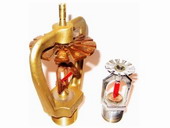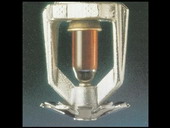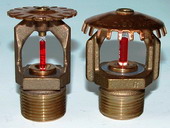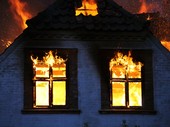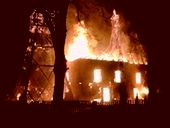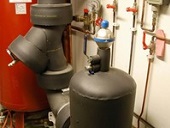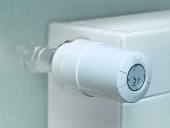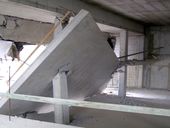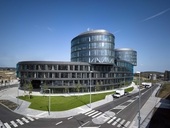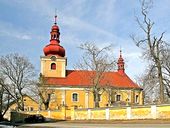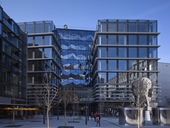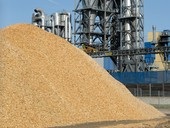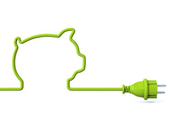Effectiveness in a broad sense expresses the degree to which the intended purpose (effect) was achieved. The purpose of efficiency - effect - is to create higher value-added workers at a higher quality working environment in the organization.
Archiv článků od 30.11.2015 do 9.5.2016
Each technology equipping today's modern buildings, facilities or campuses, provides a variety of operational data - alarms, status variables and operating parameters, which can effectively help in managing their operations. Therefore it is absolutely logical step to focus them into one unified graphical environment.
Each technology equipping today's modern buildings, facilities or campuses, provides a variety of operational data - alarms, status variables and operating parameters, which can effectively help in managing their operations. Therefore it is absolutely logical step to focus them into one unified graphical environment.
The paper describes the possibility of using fire engineering methods to ensure the safety of cultural monuments. Character of cultural heritage and the effort to preserve their historical value, is the cause of conflict situations in their evaluation in terms of fire safety. The case study of the picture gallery demonstrates some of the options of models of fire which are possible tools in solutions different from standards. The use of fire engineering methods is commented with relation to subjects usually participating in fire engineering applications.
It lasted incredibly long, but we finally have an updated prescription, to which all owners of apartment buildings were anxiously waiting. Until now valid Decree no. 372/2001 Coll. is becoming past since the start of January 2016 and a newly heat for each unit to allocate according to Decree no. 269/2015 Coll.
This paper presents methods to enhance the punching shear resistance of existing flat slabs (enlargement of supported area, enhancement of flexural resistance of slab, post-installed shear reinforcement and prestressed solutions). In case of post-installed shear reinforcement, systems based on steel and CFRP are mentioned. Static, technological and economic advantages and disadvantages are analysed. Differences between the systems are mainly due to the requirement to access the upper face of the slab, resistance-decrease in case of fire and deformation capacity of the strengthened slab.
In early September, the administration building Aviatica was inaugurated and officially unveiled, which is the flagship of a large development in the former factory Walter in Prague. Use of abandoned industrial sites, called Brownfields has been the great theme of Planning and Development during the last few years. Vast territories with dilapidated buildings have a negative impact on their environment, in terms of the degradation of the environment, environmental stress, negative social phenomena or reduction of the economic potential of the site. These lucrative localities are connected to existing technical and transport infrastructure. The transformation has a positive impact on the surrounding areas and instead of spatial expansion of cities into the countryside is one of the ways to exploit their intrinsic potential.
In October 2015, it was one year from when the new polyfunctional building Quadrio in the center of Prague above the metro station Národní třída was opened. It incorporates not only business and office space, but also residential building, a public passage and exit from the metro station. After almost thirty years a big scar of the historic city was healed. It was caused by the construction of the metro station Národní třída, which was accompanied by the demolition of the original buildings and the replacement with single-storey ground lobbies that suit rather to the suburb than the city center. At the same time a new public urban space was created, a stone plaza, which is in the case of similar projects rather rare exception than the rule.
Methods of cost allocation in apartment buildings have undergone significant changes in recent years. The article offers a comprehensive overview of cost allocation methods in multi-dwelling units according to applicable regulations. It is intended mainly for owners of residential units, board members of homeowners associations, managers of housing cooperatives or individuals and companies managing residential buildings.
Cost allocation in apartment buildings is currently governed by two laws: Act No. 67/2013 Coll. and the new Civil Code No. 89/2012 Coll. These laws governed cost allocation in calendar year 2014 and apply also for 2015. The heating and hot water supply costs in MDUs from 2016 onwards will be allocated pursuant to the new decree No. 269/2015 Coll. and the amended Act No. 67/2013 Coll.
The second part of the article describes specific aspects of the construction as the subject of the Contract for work and materials. It looks into ownership issues of the construction – the subject, the execution of the construction and its possible defects. It carries on to contextually analyze specific problems, like the transfer of risk of damage, right to invoice, inspection of subject progress, hidden obstructions and construction handover and acceptance. It also outlines the issue of joint responsibility of a subcontractor for construction defects.
Usage of solid biofuels increases due to substitution of fossil fuels. This fact contributes to increasing of danger of fire due to spontaneous combustion. Spontaneous combustion of these materials occurs during their storage in large piles. This tendency to spontaneous combustion is not the same, but is influenced by various factors. This article deals with the determination of tend to spontaneous combustion and evaluation of effect of moisture on self – ignition temperature of four kinds of wood chips. Evaluation of tendency to spontaneous combustion was performed according to standard EN 15188, in an isothermal furnace. The results have implications for the specification of safe conditions of storage of coal and wood substances and the selection of safety measures.
The aim of electricity distributor is that customers may be sourced if a constant amount of energy. When properly appliances division into groups according to how they can be turned off, it is possible to reduce the agreed value of the load shedding and save on fixed fees. The regulator load shedding so in the short term applies.
zpět na aktuální články



